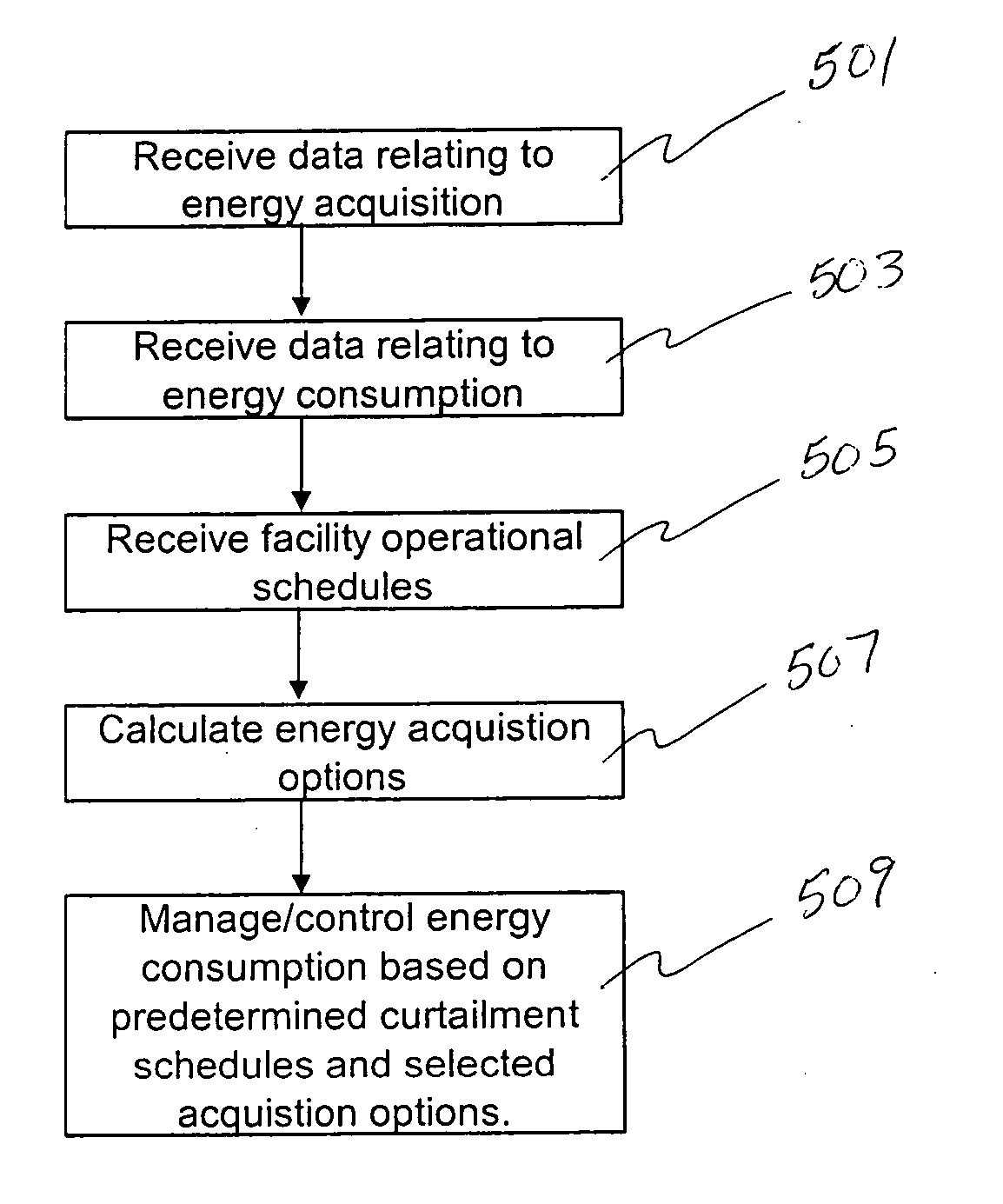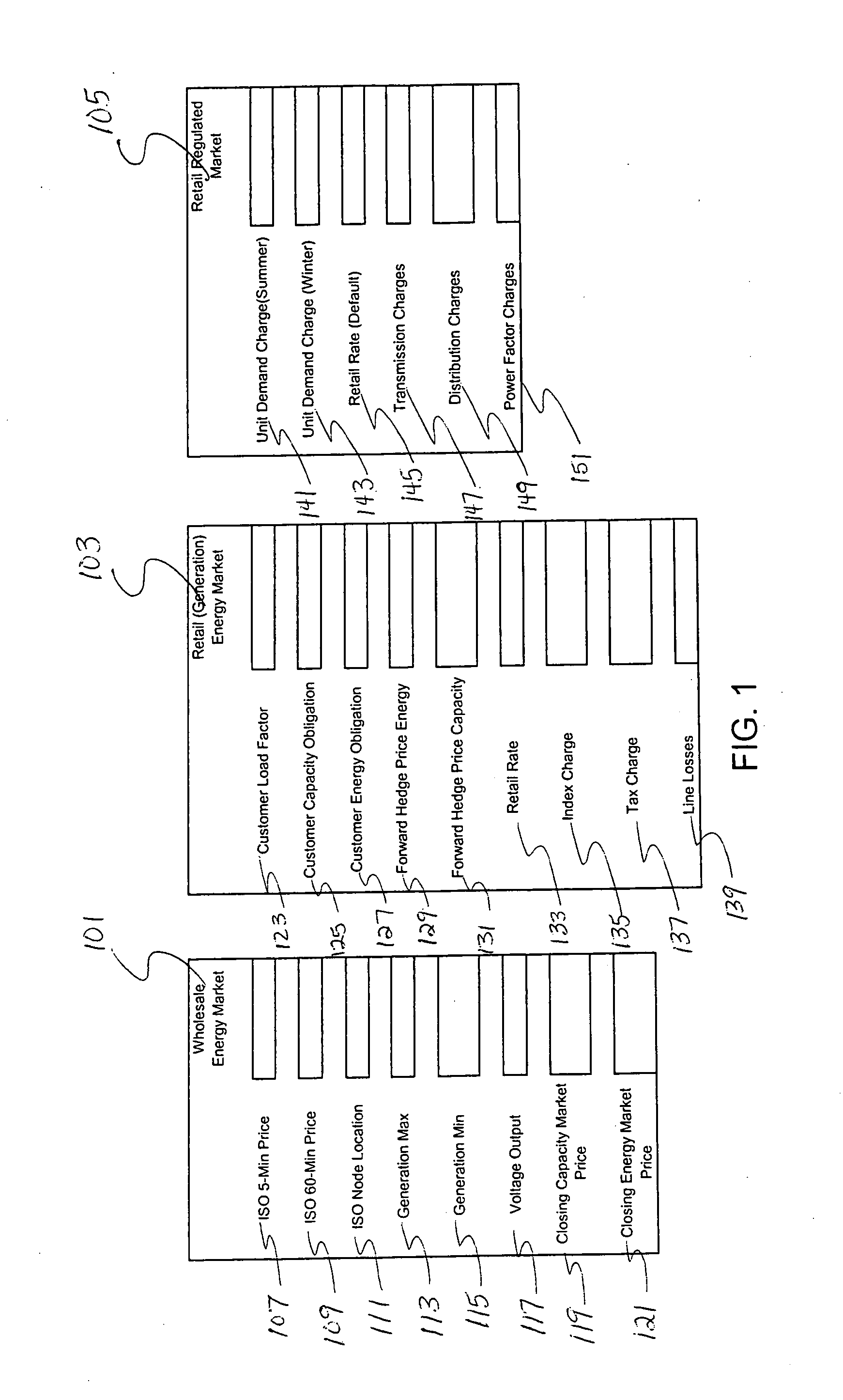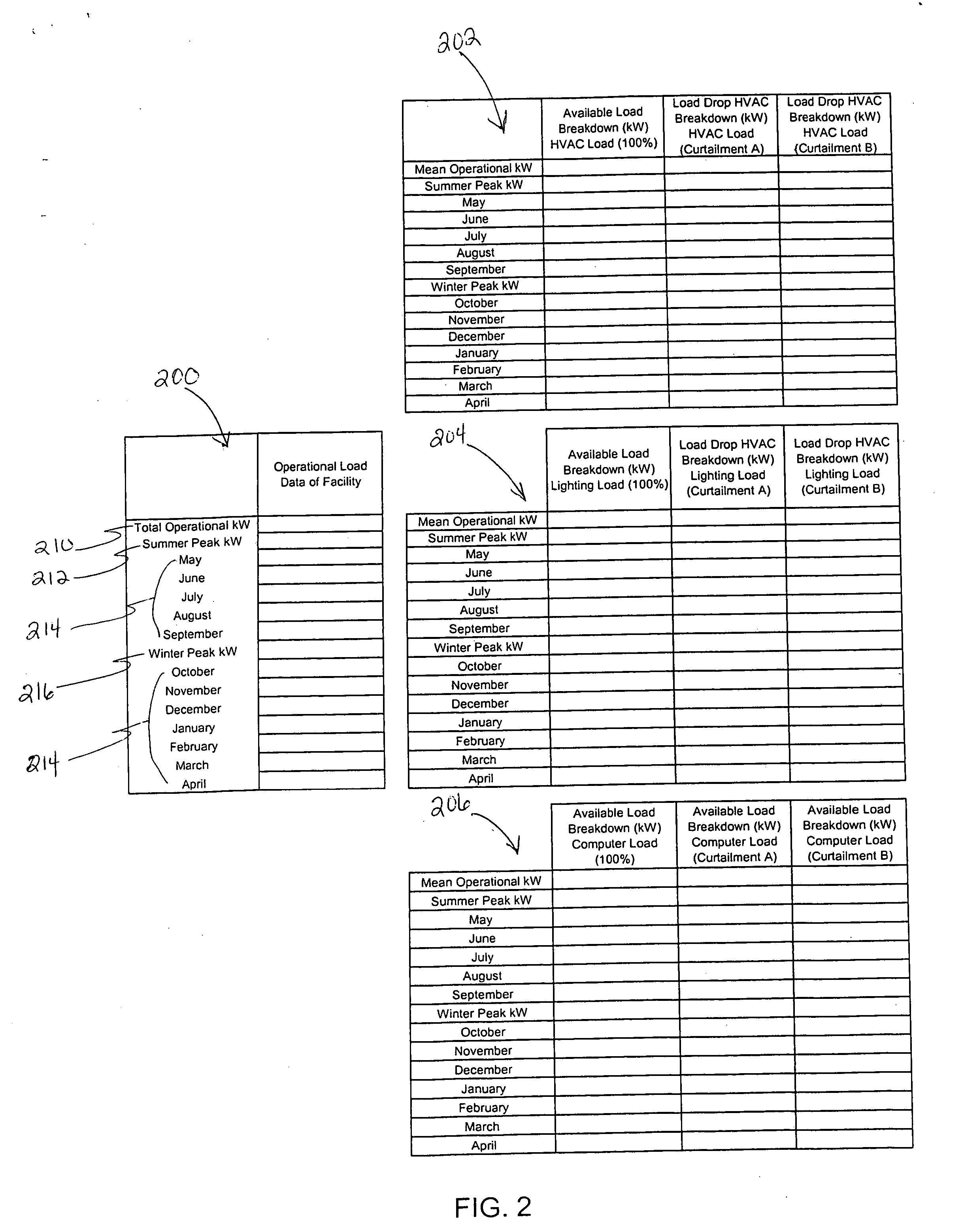Automated energy management system
a technology of energy management and automatic control, applied in the direction of material dimension control, process and machine control, instruments, etc., can solve the problems of increasing the difficulty of implementing demand shaving, the difficulty of reducing capacity kw, and the complexity of the reduction technique of kw, so as to achieve a greater level of energy efficiency
- Summary
- Abstract
- Description
- Claims
- Application Information
AI Technical Summary
Benefits of technology
Problems solved by technology
Method used
Image
Examples
Embodiment Construction
[0030] Reference will now be made in detail to an embodiment of the invention, an example of which is illustrated in the accompanying drawings.
[0031] The invention relates to an automated energy rate reduction and demand side sequencing management and analysis system utilized to drive further energy saving efficiencies for commercial consumers by bridging the gap between supply and demand side energy management. This management system enables energy consumer's to determine, automate and react in “real-time” to all of the cost sensitive energy billing components in a unregulated or regulated utility energy supplier rate as well as determine a “real-time” demand side operational sequence in order to drive new costs in their facility.
[0032] The energy management system according to an embodiment of the invention processes and analyzes different input data regarding consumers' supply side energy pricing and demand side operational control sequences for the facility (“savings aggressiv...
PUM
 Login to View More
Login to View More Abstract
Description
Claims
Application Information
 Login to View More
Login to View More - R&D
- Intellectual Property
- Life Sciences
- Materials
- Tech Scout
- Unparalleled Data Quality
- Higher Quality Content
- 60% Fewer Hallucinations
Browse by: Latest US Patents, China's latest patents, Technical Efficacy Thesaurus, Application Domain, Technology Topic, Popular Technical Reports.
© 2025 PatSnap. All rights reserved.Legal|Privacy policy|Modern Slavery Act Transparency Statement|Sitemap|About US| Contact US: help@patsnap.com



